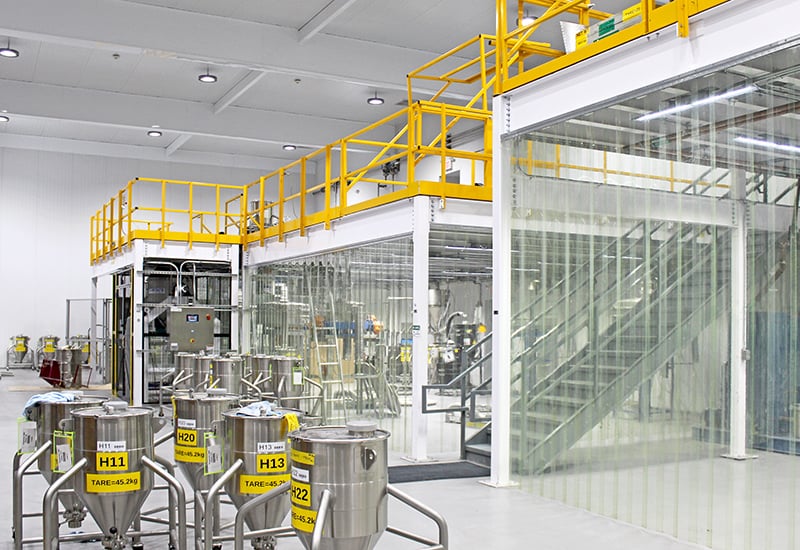Read time: 2 mins
Date posted: May 2020
Theme: Industry 4.0, Product Innovations
A manufacturer's guide to driving business during production downtimes
The COVID-19 pandemic has shown us a glimpse into the short and long-term economic impacts on the global manufacturing industry. As the National Association of Manufacturers revealed in a recent survey, 53 percent of organizations in the manufacturing sector expect COVID-19 to change their operations over the coming months and 35 percent are currently facing supply chain disruptions.
Like many other companies, GKN Powder Metallurgy has faced a stoppage in activities since March. With most operations on hold for the past several weeks, we are now challenged to master the restart process. As we join the manufacturing industry in relaunching production, we have set our focus on utilizing a digital approach to leverage its most clear advantages during market uncertainty: making quality decisions and implementing operations quickly.
/Impact%20on%20Manufacturing-1.png?width=1024&name=Impact%20on%20Manufacturing-1.png)
We believe that digital systems are a key factor in our company’s core competitive advantage to provide real-time data and enable a data-driven decision-making process. During regular production schedules, we have seen the positive results achieved with the digital maturity of our plants and the ability to outperform most of our key performance indicators. Building on our past experience and success with smart manufacturing, we see digital systems as an essential tool for manufacturing moving forward.
Properly managing the restart process is now the key focus for the manufacturing industry, and this process has shown us the important role digital systems play in driving business during manufacturing downtimes. Today GKN Powder Metallurgy's Chief Digital Officer Paul Mairl explains how we focused on customer demand management and productive stock reduction during the restart process.
How to manage customer demand with transparent data
Even before downtimes related to COVID-19, we set to find digital solutions that would improve customer demand management challenges. The implementation of production schedulers allowed our team to shift from overbearing demand to a robust production plan process. Through testing, we identified that in-depth knowledge of customer call-off qualities, changing demand numbers and possible impacts on production planning were crucial to the process advancements.
/Digital%20Benefits%20(2).png?width=1024&name=Digital%20Benefits%20(2).png)
To establish a more productive customer demand management strategy, we created full transparency through our systems, online testing programs and production plans. The implementation of an advanced digital system allowed our team to shorten the planning horizon to a two-week window, creating faster results and more agile resource adjustments.
We believe that open communication with customers is a key factor in maintaining a mutually beneficial partnership. With our digital systems focused on forecasting and planning, our team is now able to spend more time in the areas of focus that truly matter. We lead each conversation with transparent data that is directly provided from our systems.
Determining productive stock reduction
Challenges in stock reduction created an immediate focus for our team to identify ways in which digital systems could support or improve our process. During downtimes, most manufacturing companies will see a fairly drastic drop in customer demand over a shortened timeframe. To combat this frustration for supply chain managers, we followed a similar approach as our customer demand management strategy with the use of robust digital systems.
GKN Powder Metallurgy Chief Digital Officer Paul Mairl explains how manufacturing companies can leverage smart manufacturing for efficient process controls.
First, we gathered a quick and transparent understanding of stock levels that were pulled directly from the system. Based on this on-demand information, we could define real-time targets. The system allows us to narrow down inventory supply by specific products to link inventory and production timelines to customer demand, ensuring new production and inventory usage are correlated in timing plans. While this logic seems relatively straightforward, this seamless process allows for open communication across 28 global production locations.
How do we ensure that the systems and our employees work together efficiently? We encourage data-driven decision making during daily reviews; a process that utilizes system-generated data so our team can spend more time focusing on our customers and less time preparing presentations for internal meetings. This process reduced our product inventory by 25 percent within six weeks of implementation.
/Product%20inventory%20reduction.png?width=1024&name=Product%20inventory%20reduction.png)
We have seen first-hand the damage that global economic uncertainty brings upon the manufacturing industry. Tools that encourage data-drive decision-making processes and data transparency are the key differentiators that allow a company to make an agile return after unprecedented downtimes.




